Description
INDICATIONS:
These are derived from the antibacterial activity and the pharmacokinetic characteristics of spiramycin. They take into account both clinical studies involving the drug and its position in the currently available range of antibacterial products.
They are limited to:
– Infections caused by micro-organisms defined as being sensitive, notably the following: ENT, bronchopulmonary, stomatological, cutaneous, genital (in particular prostatic), and bone infections.
– Prophylaxis of meningococcal meningitis where there is a contraindication to Rifampicin: the aim is eradication of Neisseria meningitidis from the nasopharynx. Spiramycin is not a treatment for meningococcal meningitis, it is recommended for prophylaxis in:
– Patients after curative treatment and before return to the community,
– Subjects exposed to the oropharyngeal secretions of patients during the 10 days prior to hospitalization.
– Chemoprophylaxis in acute rheumatic fever in subjects allergic to penicillin.
– Toxoplasmosis in pregnant females.
DOSAGE AND ADMINISTRATION
2 to 3 tablets 3 M.I.U. or 4 to 6 tablets 1.5 M.I.U. (i.e. 6 to 9 M.I.U.) daily, in 2 or 3 separate doses.
Prophylaxis of meningococcal meningitis:
3 M.I.U / 12 hours.
Special Populations:
Patients with impaired renal function: Due to the very small rate of urinary elimination, no dosage adaptation is necessary.
CONTRAINDICATIONS
Hypersensitivity to Spiramycin.
PRECAUTIONS
As very rare cases of acute hemolysis have been reported inpatients with glucose 6phosphate dehydrogenase deficiency, the use of Spiramycin in this patient population is not recommended.
INTERACTIONS
Levodopa: inhibition of absorption of carbidopa with decreased levodopa plasma levels.
Where necessary, patient should be closely monitored and the levodopa dosage levels adjusted.
PREGNANCY
Safety of Spiramycin during pregnancy has not been studied in controlled trials. However, it has been safely used for many years in pregnant woman.
LACTATION
Spiramycin is excreted in the human milk. Therefore the use of Spiramycin in nursing mothers is not recommended.
ADVERSE REACTIONS
Gastrointestinal effects:
Nausea, vomiting, diarrhea and very rare cases of pseudo-membranous colitis have been reported.
Hypersensitivity reactions:
Rash, urticaria, pruritus.
Very rarely angioedema, anaphylactic shocks. Isolated cases of vasculitis, including HenochSchonlein purpura.
Peripheral and central nervous system:
Occasional cases of transient paresthesia.
Liver:
Very rare cases of liver tests function abnormalities have been reported.
Hematology:
Very rare cases of acute hemolysis have been reported.
Injection Site (parenteral form only):
Rare cases of local venous intolerance.
OVERDOSE
There is no specific antidote for Spiramycin overdosage. In case of suspected massive overdosage, a symptomatic and supportive treatment is recommended.
PHARMACODYNAMICS
Spiramycin is an antibiotic belonging to the macrolides group.
The antibacterial spectrum of Spiramycin is follows:
Sensitive species:
Gram-positive aerobes:
Bacillus cereus, Corynebacterium diphtheriae, Enterococci, Rhodococcus equi, Staphylococcus methicillin S, Staphylococcus methicillin R, Streptococcus B, Streptococcus non groupable, Streptococcus pneumoniae, Streptococcus pyogenes
Gram-negative aerobes:
Bordetella pertussis, Branhamclla catarrhal is, Campylobacter, Legionella, Mordxella
Anaerobes:
Actinomyces, Bacteroides, Eubacterium, Mobiluncus, Peptostreptococcus, Porphyromonas, Prevotella, Propionibacterium acnes
Others:
Borrelia burgdorferi, Chlamydia, Leptospires, Mycoplasma pneumoniae, Treponema pallidum
Moderately sensitive species:
Gram-positive: Neisseria gonorrhea
Anaerobes: Clostridium perfringens
Others: Urea plasma urealyticum
Resistant species:
Gram-positive: Corynebacterium jeikeium, Nocardia asteroids
Gram-negative aerobes: Acinetobacter, Enterobacteria, Haemophilus, Pseudomonas
Anaerobes: Fusobacterium and others mycoplasma hominis
N.B.: some species are not mentioned in the spectrum due to the lack of therapeutic indication.
PHARMACOKINETICS
Characteristics in patients
Patients with impaired renal function:
Unchanged active drug is practically not eliminated by the renal route with the oral forms. With the IV route, the rate of renal elimination is very low.
Absorption:
– Rapid, but incomplete, absorption (absorption half-life: 20 min.).
– Absorption is not affected by concomitant food ingestion.
Distribution
– After oral administration of Spiramycin 6 M.I.U., the peak serum concentration is 3.3 g/ml.
– The half-life is about 8 hours.
– Excellent diffusion occurs in the saliva, and excellent diffusion in the tissues (lungs: from 20 to 60 g/g; tonsils: from 20 to 80/g; infected sinuses: from 75 to 110 g/g; bone: from 5 to 100 g/g). Ten days after discontinuation of treatment, 5 to 7 g/g of active constituent persists in the spleen, liver and kidneys.
– Spiramycin does not penetrate into the C.S.F.
– It passes into breast milk and binds with plasma proteins (approximately 10%).
Metabolism
Spiramycin is slowly inactivated in the liver, with formation of unknown metabolites.
Excretion
– Biliary elimination is very extensive; levels are 15 to 40 times higher than those in serum. High quantities are found in the feces.
– Only 10% of the ingested dose is found in urine.
PACKING:
A carton box containing 10 tablets in one PVC / Al strip with a pamphlet.
STORAGE:
Keep at a temperature not exceeding 30C, in dry place.
Keep out of reach of children.
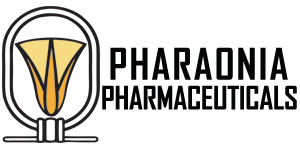

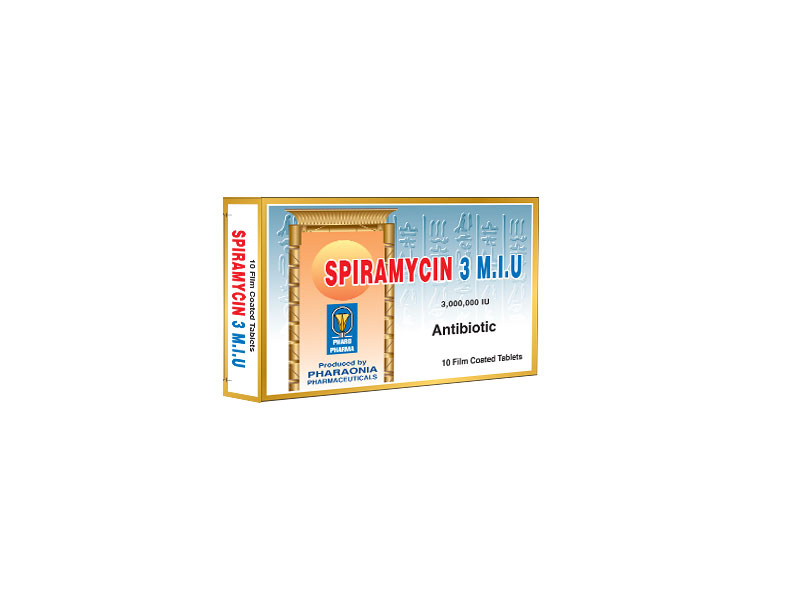
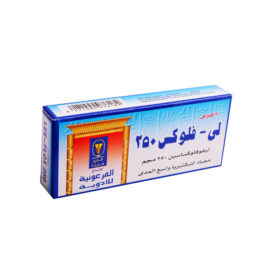
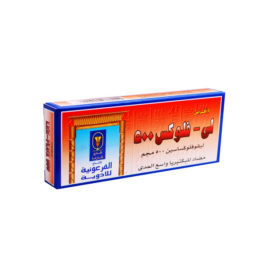
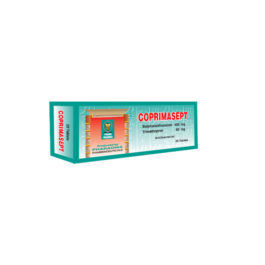

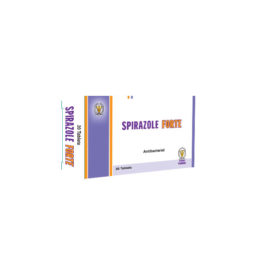
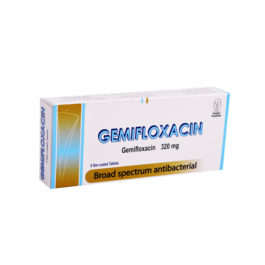
Reviews
There are no reviews yet.